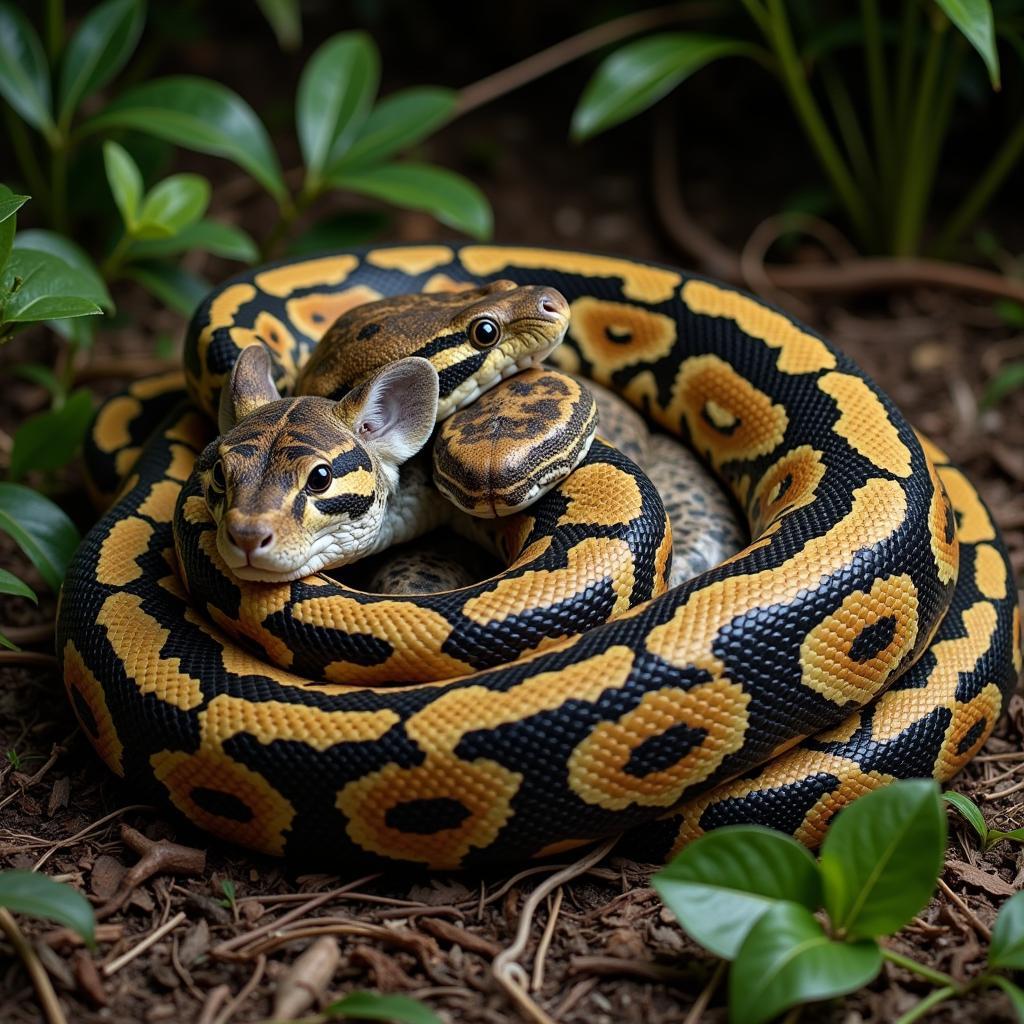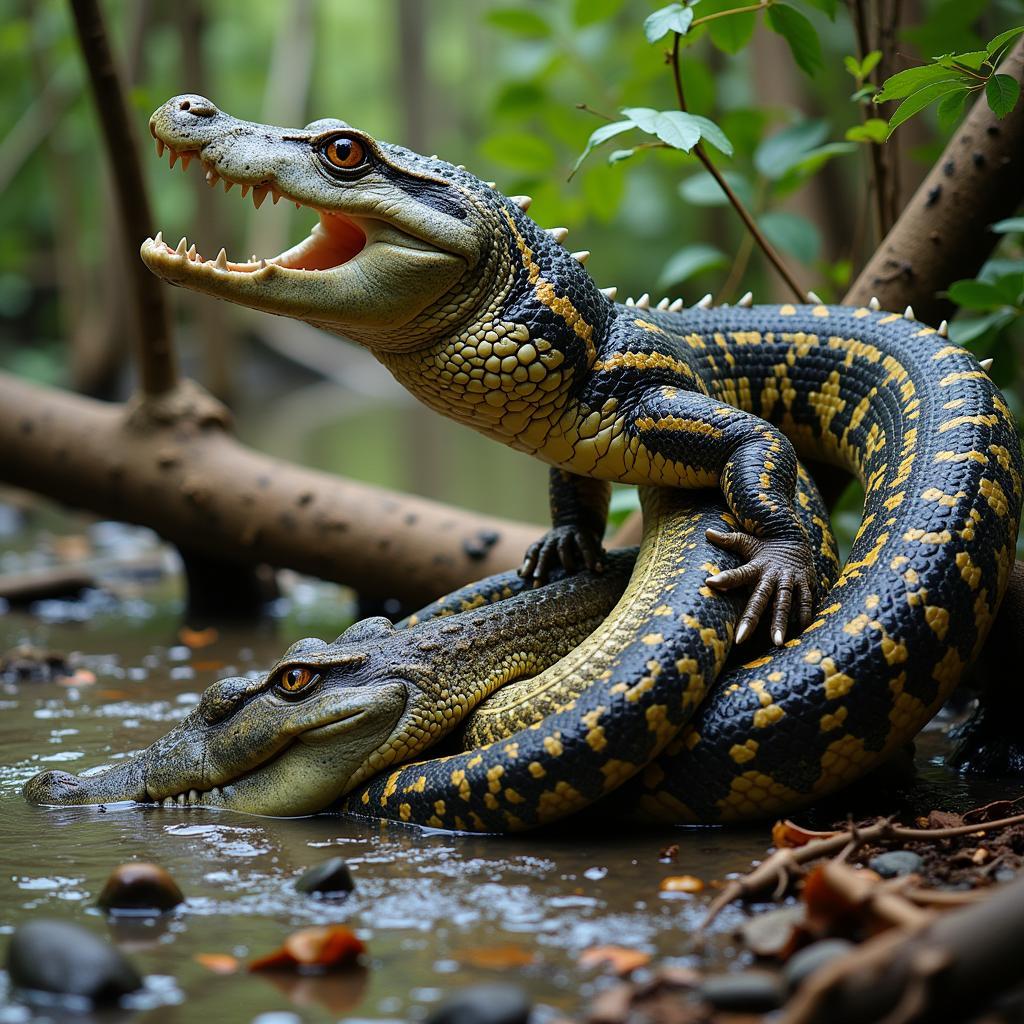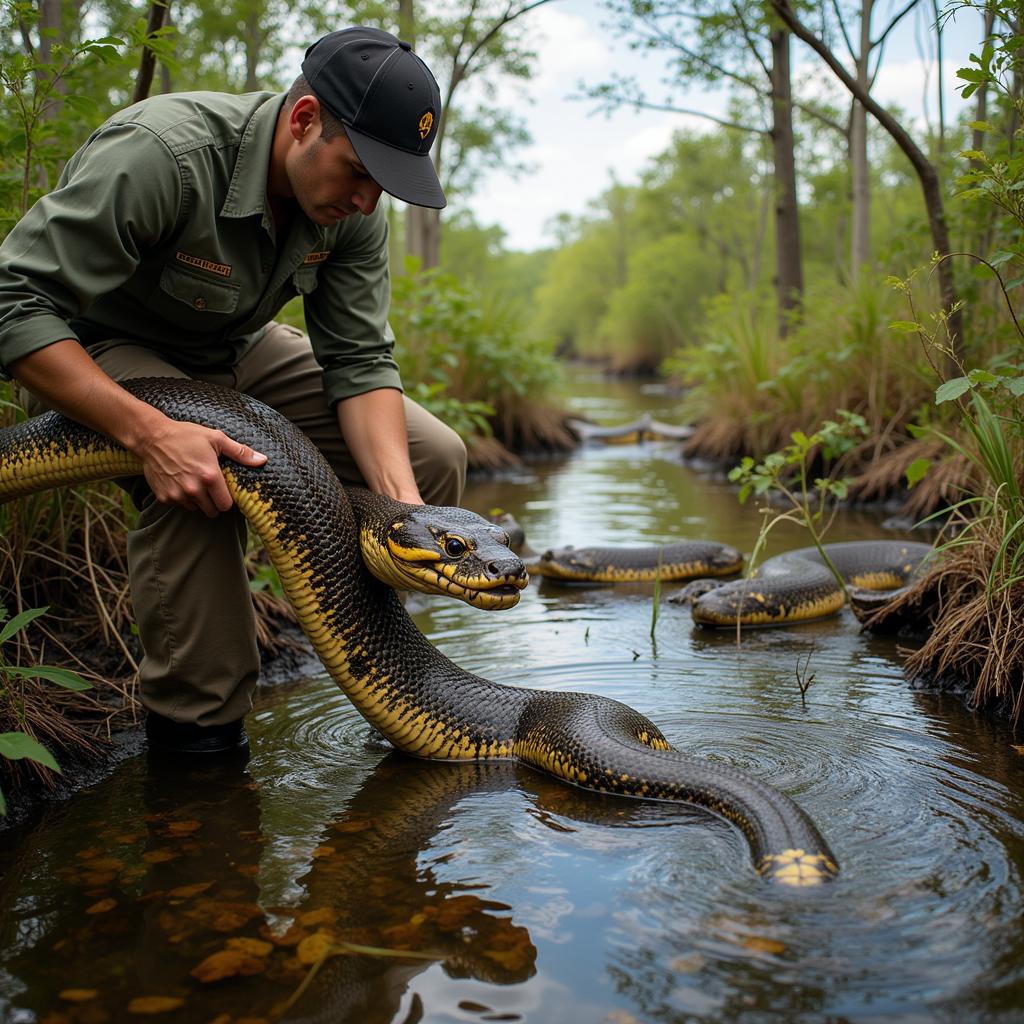The Burmese python, a non-native species in the Everglades, sits atop the food chain, significantly impacting the delicate ecosystem. Its voracious appetite and impressive size have led to a decline in native mammal populations, posing a serious threat to the biodiversity of this unique environment. Understanding the Burmese python’s place in the food chain is crucial for developing effective conservation strategies.
Understanding the Burmese Python’s Diet
Burmese pythons are opportunistic feeders, meaning they will consume a wide variety of prey. Their diet consists primarily of mammals, birds, and reptiles. In the Everglades, their prey includes rabbits, raccoons, opossums, white-tailed deer, and even alligators. The size of the prey is often limited only by the size of the snake itself, with larger pythons capable of taking down significantly larger animals. This adaptability and lack of dietary specialization contributes to their success as an invasive species.
As these pythons consume native species, they disrupt the natural balance of the Everglades ecosystem. The decline in prey populations has cascading effects on other animals and plants, ultimately altering the entire food web. This disruption poses a significant challenge to the long-term health and stability of the Everglades.
 Burmese Python Consuming Rabbit in Everglades
Burmese Python Consuming Rabbit in Everglades
The Impact of Burmese Pythons on the Everglades Food Web
The introduction of the Burmese python has had a devastating impact on the Everglades food web. The decline in mammal populations has affected predators like bobcats and panthers, who now face increased competition for dwindling resources. It’s also affected prey species lower on the food chain. For instance, fewer raccoons and opossums could mean a rise in the populations of their prey, like insects and small rodents. This complex interplay of predator-prey relationships highlights the far-reaching consequences of the python invasion.
The lack of natural predators for adult Burmese pythons further exacerbates the problem. While younger pythons may fall prey to alligators or birds of prey, adult pythons have few natural enemies in the Everglades. This allows their population to continue to grow unchecked, further destabilizing the ecosystem.
 Burmese Python vs. Alligator Struggle in Everglades
Burmese Python vs. Alligator Struggle in Everglades
What Eats a Burmese Python? Natural Predators and Control Efforts
While adult Burmese pythons have few natural predators in the Everglades, younger individuals are vulnerable. Alligators, birds of prey, and even larger pythons have been known to prey on juveniles. However, these natural predation pressures are not enough to control the burgeoning python population. As such, various control efforts are being implemented, including trapping and removal programs. These programs aim to reduce python numbers and mitigate their impact on the Everglades ecosystem.
Researchers are also exploring innovative methods for controlling python populations, such as using trained dogs to detect and track pythons, and developing pheromone-based traps. These efforts represent a crucial step in restoring the balance of the Everglades food chain.
“The Burmese python’s impact on the Everglades is a stark reminder of the dangers of invasive species,” says Dr. Emily Carter, a leading herpetologist specializing in invasive species management. “We must continue to develop and implement effective control strategies to protect this vital ecosystem.”
 Burmese Python Trapping Program in Everglades
Burmese Python Trapping Program in Everglades
Conclusion
The Burmese python’s dominance in the Everglades food chain presents a significant challenge to the health and biodiversity of this unique ecosystem. Understanding the complex interplay between the python and its prey is crucial for developing effective management strategies. By continuing research and implementing innovative control methods, we can work towards restoring the balance of the Everglades and protecting its delicate food web from further disruption caused by the Burmese python.
FAQ
- What do Burmese pythons eat in the Everglades? They primarily eat mammals, birds, and reptiles, including rabbits, raccoons, opossums, deer, and even alligators.
- Why are Burmese pythons a problem in the Everglades? They are an invasive species with few natural predators, leading to a decline in native animal populations and disrupting the food web.
- What is being done to control the Burmese python population? Trapping and removal programs, along with research into innovative control methods like using trained dogs and pheromone traps.
- How big can Burmese pythons get? They can reach lengths of over 20 feet and weigh over 200 pounds.
- What is the impact of Burmese pythons on other predators? They create competition for dwindling resources, affecting predators like bobcats and panthers.
- Are there any natural predators of Burmese pythons in the Everglades? Young pythons are vulnerable to alligators, birds of prey, and even larger pythons, but adults have few natural enemies.
- How does the Burmese python’s diet affect the entire Everglades ecosystem? Their consumption of native species disrupts the natural balance of the food web, impacting other animals and plants and altering the ecosystem’s long-term health.
“The challenge of managing invasive species like the Burmese python requires a multifaceted approach, combining scientific research with practical control measures,” adds Dr. James Miller, a wildlife biologist with extensive experience in Everglades restoration. “Public awareness and community involvement are also crucial for the long-term success of these efforts.”
For further information on invasive species and the Everglades ecosystem, you might find our articles on invasive plant species and the impact of climate change on the Everglades helpful.
Need assistance? Contact us 24/7 at Phone Number: 02437655121, Email: minacones@gmail.com or visit us at 3PGH+8R9, ĐT70A, thôn Trung, Bắc Từ Liêm, Hà Nội, Việt Nam. We have a dedicated customer support team ready to help.